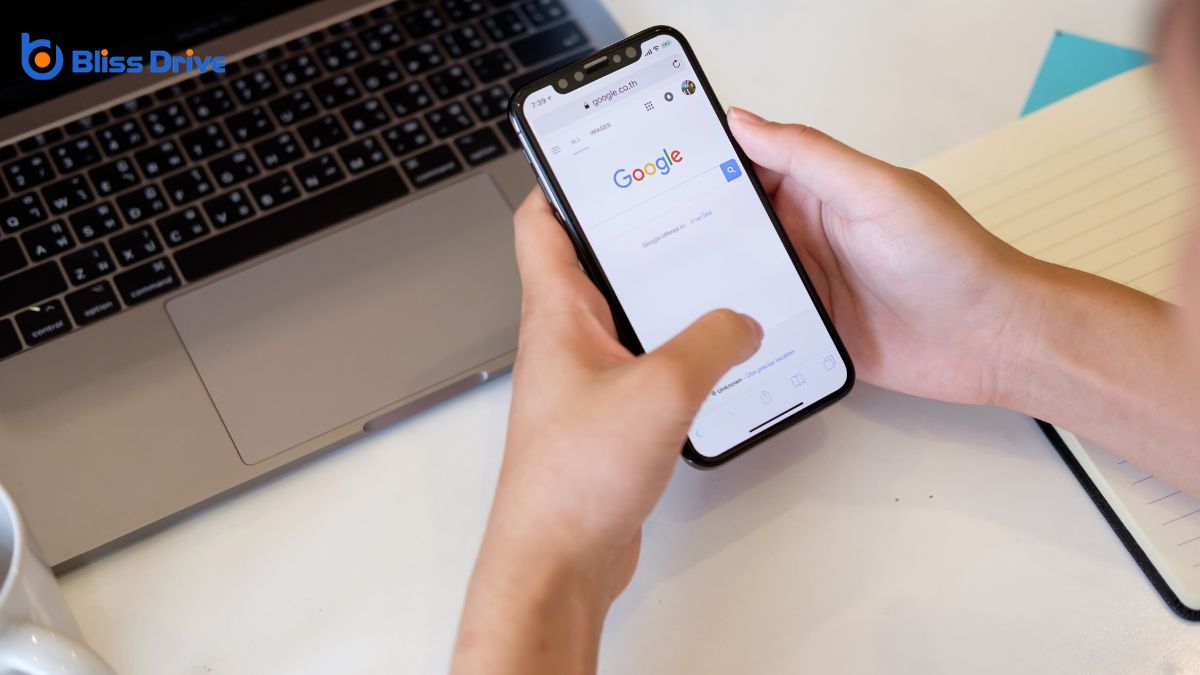Learn More About Us

Mobile-first indexingGoogle’s practice of using the mobile version of a website for indexing and ranking. is Google's method of ranking sites based on their mobile version rather than the desktop version. This shift is due to the prevalence of smartphones, making mobile optimizationDesigning and formatting web content to ensure it performs well on mobile devices. critical for search rankingsThe position at which a website appears in the SERP.. Guarantee your mobile site is seamless, fast, and consistent with desktop content for better SEO. Focus on responsive designA web design approach that makes web pages render well on a variety of devices and window or screen ... and user experience to enhance visibility. Want to optimize your approach even further? There's more valuable insight waiting just ahead.

When it comes to understanding mobile-first indexing, it's all about recognizing how search engines prioritize the mobile version of a website for ranking purposes.
You're stepping into a world where mobile usability greatly influences your site's visibility. Search engines now assess the mobile version as the primary point of reference. If your site's mobile experience isn't up to par, it might impact how you're ranked in search results.
To optimize for mobile-first indexing, make certain your website is responsive and offers a seamless experience on all devices.
Check that content, images, and navigation work flawlessly on mobile screens. Remember, it's not just about appearance; speed matters too. Fast-loading pages improve user experience, making them crucial in this mobile-centric world.
Stay ahead by prioritizing mobile optimization.
You've probably noticed how Google's focus has shifted to mobile-first indexing, prioritizing mobile content over desktop.
This change greatly impacts search rankings, so ensuring your site is mobile-optimized is vital.
As you compare desktop and mobile content, it's important to maintain consistency to avoid any negative effects on your search visibility.
As the digital landscape evolves, Google's approach to indexing has shifted dramatically, prioritizing mobile-first strategies to keep pace with user behavior.
Nowadays, you probably spend more time on your smartphone than a desktop, and Google knows it. This shift means Google primarily uses the mobile version of a site's content for indexing and ranking. They've adapted to guarantee users find relevant, high-quality pages, no matter the device.
You need to confirm your website is mobile-friendly, as Google's mobile-first indexing is all about delivering a better mobile experience.
It's vital to optimize your site for smaller screens, faster load times, and seamless navigation. If your site isn't mobile-ready, you're at risk of falling behind as Google's focus on mobile grows stronger.
Google's emphasis on mobile-first indexing doesn't just enhance user experience; it markedly affects search rankings too. If your site's mobile version isn't up to par, you'll likely see a dip in your rankings.
Google now primarily crawls the mobile version of your site, so it's essential to make sure it's optimized. This means fast loading times, responsive design, and thorough content.
If your mobile site lacks essential information or functionality, you're not just impacting user experience—you're risking lower visibility in search results.
Prioritizing mobile optimization isn't optional; it's vital for maintaining or improving your site's position. So, check your mobile performance regularly.
Investing in a seamless mobile experience not only attracts more users but also boosts your search engine ranking.
While the digital landscape shifts, the evolution of Google's indexing approach from desktop to mobile content has been transformative. You might've noticed that mobile devices now dominate web trafficThe number of visitors to a website, often used as a measure of an affiliate's reach and influence..
As a result, Google prioritizes mobile content to guarantee users get the best experience. If your desktop and mobile sites differ, Google's mobile-first indexing means it primarily checks the mobile version for ranking. This shift requires you to focus on optimizing mobile content first.
If your mobile site lacks content or features present on your desktop site, it could impact your search rankings. That's why maintaining consistency across both versions is essential.
Think about how your content looks and functions on mobile devices. Prioritize a responsive design that harmonizes both desktop and mobile experiences.
Though search engines aim to provide seamless experiences across devices, key differences exist between mobile and desktop indexing that you should know.
When indexing content, mobile-first indexing prioritizes the mobile version of your site, while desktop indexing focuses on the desktop version. If your mobile site has less content or simplified navigation, search engines might miss important information if they’re only looking at the mobile version.
Mobile indexing also emphasizes responsive design and page load speed more heavily than desktop indexing. Mobile users expect fast, easily navigable pages, so search engines assess how well your site delivers on mobile devices.
Additionally, mobile indexing considers mobile-specific features like touch elements and screen size adaptability. Understanding these differences guarantees your site meets the diverse needs of both mobile and desktop users.
You can't ignore mobile-first indexing if you care about your search rankings.
With more users accessing content on mobile devices, providing a seamless user experience on smaller screens is essential.
Ensuring your website is responsive not only boosts your visibility but also keeps users engaged and satisfied.
As mobile-first indexing takes precedence, its impact on search rankings can't be ignored.
Google's shift means your site's mobile version is now the primary factor for ranking. If your mobile site isn't optimized, your rankings could suffer, making it essential to adapt.
Mobile-first indexing affects your SEO strategy in several ways:
Ignoring these elements might hurt your search performance.
Understanding the impact on search rankings sets the stage for why focusing on mobile user experience is essential in the era of mobile-first indexing.
When users visit your site on their phones, they expect a seamless experience. If your site loads slowly or content is hard to navigate, they'll leave quickly, increasing your bounce rateThe percentage of visitors who leave a website after viewing only one page.. This tells search engines that your site isn't user-friendly, negatively affecting your rankings.
Improve mobile user experience by guaranteeing fast load times and intuitive navigation. Use readable fonts and make certain buttons are easily tappable.
Make certain images and videos are optimized for mobile devices. By prioritizing a smooth mobile experience, you're not just keeping visitors happy but also boosting your SEO, making your site more visible in search results.
While guaranteeing your website is responsive might seem like a small detail, it plays an essential role in mobile-first indexing and SEO. When your site adapts seamlessly to different devices, you’re not just enhancing user experience; you’re also boosting your search engine rankings.
Google prioritizes mobile-friendly sites, making responsiveness vital for visibility. Here’s why it matters:
When Google's mobile-first indexing came into play, the rules of the SEO game changed considerably. Now, Google primarily looks at the mobile version of your site for ranking and indexing purposes.
If your website isn't mobile-friendly, its rankings might drop, affecting your visibility and traffic. You need to make certain that your mobile site has the same valuable content as your desktop version. Missing elements like structured data or metadata can negatively impact your rankings.
Slow-loading mobile pages also hurt your site's performance in search results. Pay attention to user experience on mobile devices; a site that’s hard to navigate can lead visitors away.
Ultimately, focusing on mobile usability is essential for maintaining or improving your search engine rankings.
To adapt your website for mobile-first indexing, focus on optimizing the mobile user experience and implementing responsive design techniques.
Guarantee your site loads quickly and looks great on all devices by using flexible grids and images.
As search engines increasingly prioritize mobile-first indexing, guaranteeing a seamless mobile user experience on your website becomes essential.
You need to focus on elements that enhance usability and engagement on mobile devices. Consider the following strategies:
While optimizing the mobile user experience is essential, ensuring your website is adaptable across various devices is equally important.
Implementing responsive design techniques allows your site to automatically adjust to different screen sizes, making it accessible and visually appealing on any device. Start by using flexible grids and layouts that scale proportionally, ensuring content doesn’t spill over or become distorted.
Incorporate media queries in your CSS to apply specific styles for different device widths. Prioritize fast-loading images by utilizing formats like WebP and using CSS to control dimensions.
Don’t forget to test your design across multiple devices and screen orientations. By focusing on a responsive design, you’re not just enhancing user experience; you’re also improving your site’s performance in mobile-first indexing.
Although mobile optimization is essential in today's digital landscape, many businesses still make common mistakes that hinder their online presence. You might think you're doing everything right, but certain errors could be holding you back.
Here are some pitfalls to avoid:
To effectively implement mobile-first optimization, a variety of tools and resources are at your disposal.
Start with Google’s Mobile-Friendly TestA tool that evaluates how well a website performs on mobile devices. to quickly check if your site meets mobile standards. Use Google Search ConsoleA tool by Google that helps monitor and maintain your site's presence in search results. for insights on how your website performs in mobile searchUsing a mobile device to conduct internet searches.. It’ll help you identify issues and improvements.
Consider using AMP (Accelerated Mobile Pages)A project to create fast-loading mobile pages. to guarantee rapid loading times. For design tweaks, tools like BrowserStack let you test your site across multiple devices and screen sizes.
Don’t neglect image optimization; tools like TinyPNG reduce image size without losing quality, vital for faster mobile loading.
With these resources, you can enhance your site's mobile experience and stay ahead in a mobile-first world.
How can you tell if your mobile-first strategy is really working? Start by analyzing key performance indicators. These metrics reveal if your efforts deliver tangible results.
Here’s what you should monitor:

As technology continues to evolve, staying ahead of future trends in mobile-first indexing is essential for maintaining a competitive edge.
You’ll need to focus on speed, as search engines prioritize fast-loading sites. Keep an eye on advancements in AI and machine learningA subset of artificial intelligence where computers use data to learn and make decisions., which will increasingly influence how content is indexed.
Responsive design remains important, but consider integrating progressive web apps (PWAs) for enhanced user experiences.
Voice searchUsing voice commands to search the internet or perform actions on a mobile device. is growing, so optimizing for conversational queries is critical. Don’t overlook the importance of structured data, which helps search engines understand your content better.
Additionally, privacy and data securityMeasures taken to protect data from unauthorized access and data breaches. will become more prominent, impacting how mobile sites are indexed. By staying informed and adapting quickly, you’ll guarantee your mobile-first strategy remains effective and relevant.
You've got the basics of mobile-first indexing down, and now it's time to put it into action. Focus on optimizing your site for mobile users to boost your SEO and improve rankings. Avoid common pitfalls and use the right tools to guarantee a seamless mobile experience. Remember, staying updated with trends will keep you ahead. By prioritizing mobile-first strategies, you’ll enhance user experience and secure your site’s success in an ever-evolving digital landscape.
